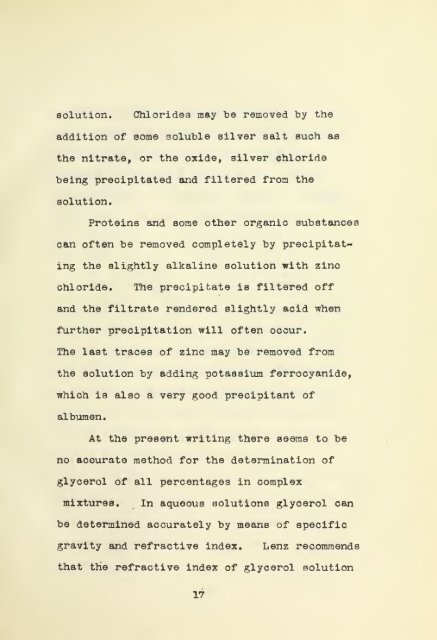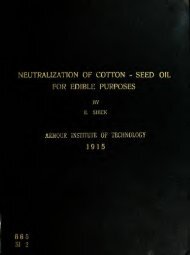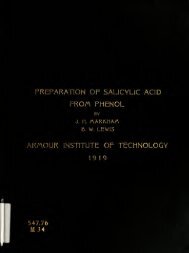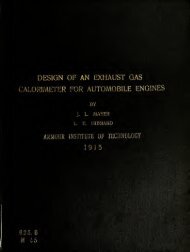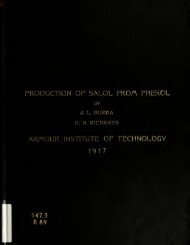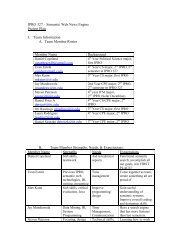Glycerol and spent lye clarification - Illinois Institute of Technology
Glycerol and spent lye clarification - Illinois Institute of Technology
Glycerol and spent lye clarification - Illinois Institute of Technology
You also want an ePaper? Increase the reach of your titles
YUMPU automatically turns print PDFs into web optimized ePapers that Google loves.
solution. Chloridea may be removed by the<br />
addition <strong>of</strong> some soluble silver salt such as<br />
the nitrate, or the oxide, silver chloride<br />
being precipitated <strong>and</strong> filtered from the<br />
solution.<br />
Proteins <strong>and</strong> some other organic substances<br />
can <strong>of</strong>ten be removed completely by precipitat-<br />
ing the slightly alkaline solution with zinc<br />
chloride. The precipitate is filtered <strong>of</strong>f<br />
<strong>and</strong> the filtrate rendered slightly acid when<br />
further precipitation will <strong>of</strong>ten occur.<br />
The last traces <strong>of</strong> zinc may be removed from<br />
the solution by adding potassium ferrocyanide,<br />
which is also a very good precipitant <strong>of</strong><br />
albumen.<br />
At the present writing there seems to be<br />
no accurate method for the determination <strong>of</strong><br />
glycerol <strong>of</strong> all percentages in complex<br />
mixtures. In aqueous solutions glycerol can<br />
be determined accurately by means <strong>of</strong> specific<br />
gravity <strong>and</strong> refractive index, Lenz recommends<br />
that the refractive index <strong>of</strong> glycerol solution<br />
17


